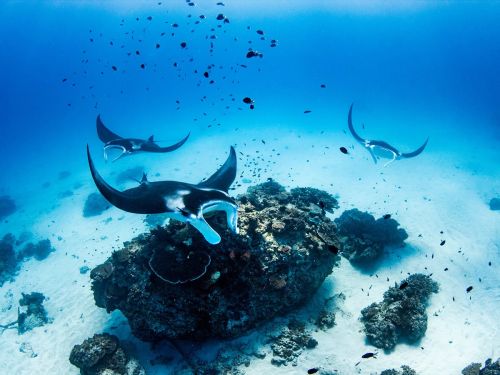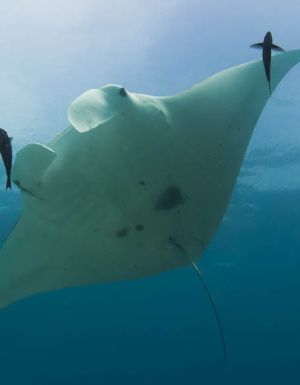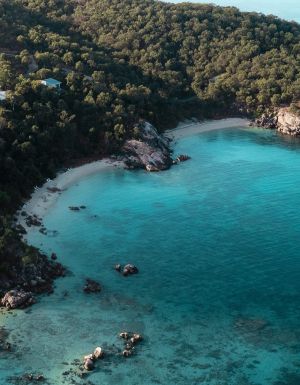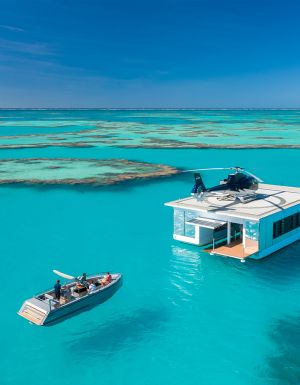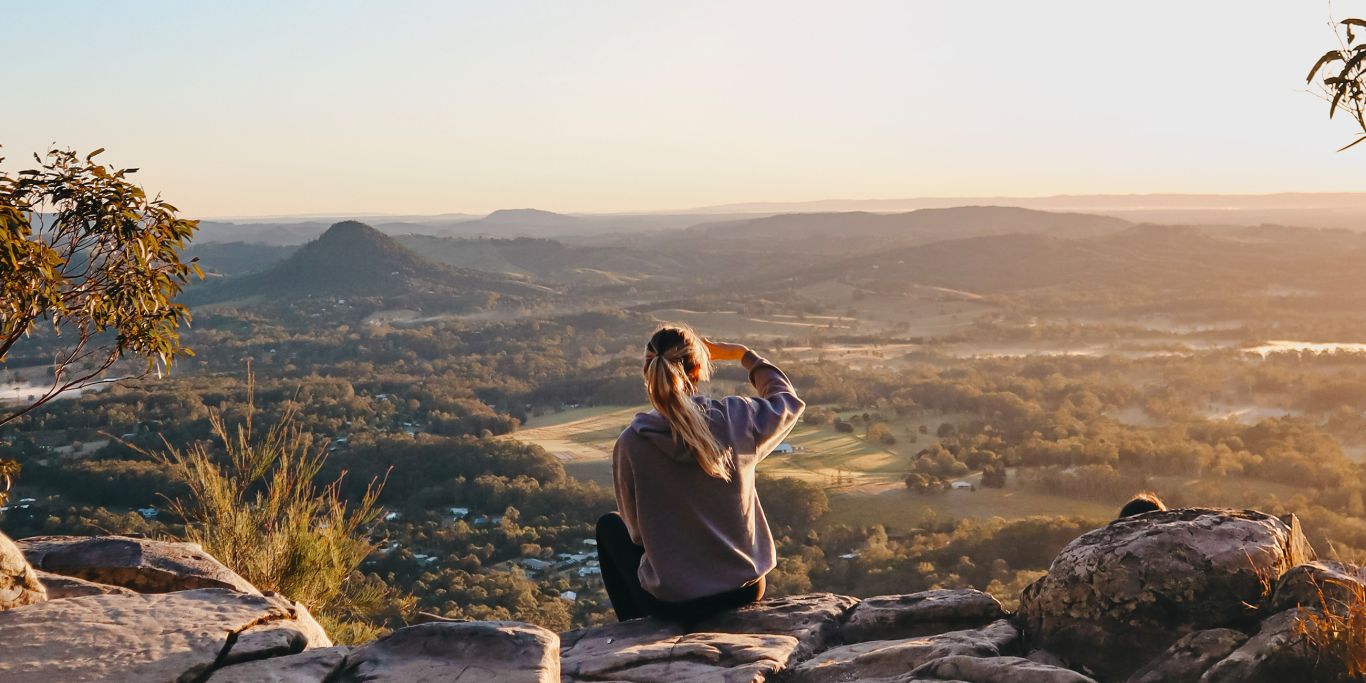Get up close and personal with extraordinary marine life in a paradise like no other.
Lady Elliot Island is one of the Great Barrier Reef’s best-kept secrets. A coral cay tucked away at its southern tip on the Fraser Coast, the waters surrounding this tiny island are home to over 1200 marine species, including turtles, reef sharks and seasonal humpback whales.
Nicknamed the ‘Home of the Manta Ray,’ researchers have identified over 700 individual manta rays in the nearby waters, making Lady Elliot Island one of the rare places where you can swim with these gentle giants.

Location
Located 80 kilometres northeast off the coast of Bundaberg, this tiny 40-hectare island, composed of crushed coral and encircled by a reef, means access by boat is not possible. The only way to reach this secluded paradise is via a small aircraft that lands on an airstrip stretching the island’s length. But arriving is half the fun!
The flight is more than just a transfer; it’s a scenic experience. The plane circles the island twice, banking on both sides to offer passengers an aerial view of the island and reef. Flights depart from Hervey Bay (a 40-minute journey), Bundaberg, Brisbane and the Gold Coast.

Style and character
There’s only one resort on Lady Elliot , and as the plane touches down, you’ll see many of the staff waving a warm welcome from the side of the airstrip. This sets the tone for the island’s friendly, laid-back atmosphere, whereby, at the end of your visit, you’ll know staff by their first names.
The award-winning eco resort prides itself on its commitment to sustainability and exudes a relaxed, intimate charm, enhanced by the knowledge that only a few are sharing this unique experience with you – overnight guests are limited to 150.
The resort’s true luxury is its proximity to natural beauty. Amenities are simple and eco-friendly, offering a serene escape where nature takes centre stage.

Experiences
Endless adventures await you on this island paradise. Choose from various water-based activities, starting with snorkelling trails accessed directly off the beach or snorkelling tours with a master reef guide who will spot more marine life than you could spot on your own.

You can also glide over coral gardens in a glass-bottom boat , enjoy fish feeding in a shallow lagoon, kayaking, reef walks and sunset cruises . For those eager to swim with manta rays , PADI has listed the island as one of the top 12 locations in the world, and diving enthusiasts can explore over 20 dive sites.
On land, join guided discovery tours, bird watching or seasonal turtle treks. Several self-guided walks allow you to explore at your own pace, and with the entire island walkable in just 45 minutes, it’s impossible to get lost.

Facilities
Enjoy a game of table tennis, a dip in the saltwater pool or beach volleyball. Expand your knowledge at the education centre or explore the resort’s library to identify creatures from your snorkels or walks. You can also find souvenirs or postcards at the gift shop.
The resort also seamlessly integrates impressive sustainable facilities. It generates electricity through a hybrid solar power system, desalinates its water and responsibly manages all waste.

Flights to the island are carbon neutral and, instead of a concrete runway, the airstrip is a hard coral base covered with grass. Interestingly, this runway doubles as a recreational cricket pitch when not used by aircraft! And love it or hate it, there’s no mobile reception on the island, allowing you to truly disconnect and immerse yourself in nature.

Rooms
Despite its compact size, the resort boasts a range of accommodation options to suit bucket-list adventurers, honeymooners, families with young kids and marine enthusiasts.
Accommodation includes eco-cabins with shared bathrooms, garden units with en suites, reef units near the lagoon, luxurious glamping tents and two-bedroom beachfront units.

Food and drink
The relaxed Beachfront Dining Room, the island’s sole restaurant, offers a full breakfast, lunch and dinner buffet and cafe-style lunch (day trip and overnight packages include pre-purchased dining options).
The Lagoon Bar, with its expansive deck overlooking the lagoon, serves drinks and snacks all day and offers antipasto platters at sundown – the perfect accompaniment to watching an island sunset.

Access for guests with disabilities
The island’s remoteness adds to its unique charm but can impact accessibility. The resort offers wheelchair-accessible rooms and public bathrooms for day guests. Boating activities are boarded directly from the beach; at high tide, a ramp can sometimes be lowered onto the sand. For visually impaired guests, the resort offers audio recordings about the island.
Guests are encouraged to contact the reservations team to discuss individual needs.
Family-friendly
The resort caters to young adventurers with a Reef Rangers program during school holidays, offering fun, conservation-focused activities. Enjoy fish feeding, guided reef and turtle walks, a pool, a small games room and babysitting services.

Free learn-to-snorkel sessions in the pool ensure everyone is ready for the reef, and boogie boards with a see-through Perspex box are available so kids can see marine life without submerging their heads.
The resort’s library also has a selection of marine life books for curious young minds.

Details
Jetstar offers direct flights to Hervey Bay from Melbourne, Sydney and Brisbane.
Lady Elliot Island flights depart from Hervey Bay, Bundaberg, Brisbane and the Gold Coast.


